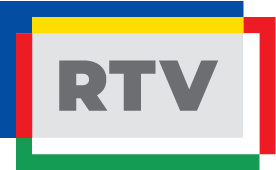Intellectual Output 2 of our project, Curricular Auxiliary for students in media production – radio, film and television
IO 2 is a curricular handbook for students in media production – radio, film and television, which includes 3 parts and has a number of 99 pages. The 3 parts deal in the first section with the field of media production, the second part represents a learning support, and the third part is dedicated to the evaluation techniques used to support the practical activity.
The first part describes in detail the qualifications on the media market, the related occupations and the specific duties and attributions in this field.
The second part is a learning unit that deals with cinema-TV techniques and technologies, cine-tv composition, lighting techniques, sound technology in radio and cine-tv.
The sub-chapter cinema-TV techniques and technologies presents the types of video cameras, image recording and storage equipment, color video cameras, understanding how to use cine-TV equipment, analyzing technical documentation and equipment specifications, performing technical recording tests – image playback.
The subchapter cine-TV composition aims to explain the nature of light, the analyze of light sources, the presentation of the fundamental characteristics of color, the illustration of the angle of the photo-cinematic frame; the dramaturgical effects obtained by moving the device; the illustration of the dramaturgical effect of the device movements; the interpretation of perception and suggestion; the determination of the main elements of the frame composition – cinematographic frames.
The Lighting techniques deal with light genres; lighting styles; the character of shadows; lighting equipment: projectors, reflectors, rivals; auxiliary lighting equipment; the selection of the artistic way of expression through lighting techniques specific to the dramaturgy of the cine-TV frame; use of lighting equipment; use of correction and color filters; adapting the way of thinking to the dramaturgical genre imposed (by the director or the creator of the show); the manifestation of critical thinking in the analyzes carried out; arguing the choice of a certain work option; compliance with work tasks.
The sub-chapter regarding the sound technique in radio and cine-TV presents the sound recording-playback equipment in the “Theoretical Notes” section; identification of audio parameters specific to the audio equipment used and comparison with standardized values; testing the audio equipment from a functional point of view; interpretation of wiring diagrams; assuming the role within the work team; showing interest in the technological evolution of audio recording-playback systems.
Each learning unit is structured according to a grid that contains learning outcomes, learning unit content, learning recommendations / tasks, self-assessment tests, bibliographic references and auxiliary materials (glossary of terms, illustrations).
The chapter Assessment techniques used to support practical activity contains examples of assessment techniques that can be used to optimize motivation to support practical work. This section aims, first of all, to develop students’ ability to distinguish between different roles and contexts, it aims to encourage the development of expressive and self-presentation capacities, for a better self-knowledge that takes into account the context. The section includes several types of questionnaires, with different recipients: a first set is addressed to the students in order to find out their expectations regarding the experience they are about to have, a self-evaluation questionnaire, a questionnaire about the skills acquired; a second set of questionnaires is addressed to the companies: a questionnaire about the companies’ expectations and another for the evaluation of the students by them.
English version is here:
🌠 Romanian version of IO 2 – download
🌠 French version of IO 2 – download
🌠 Italian version of IO 2 – download

